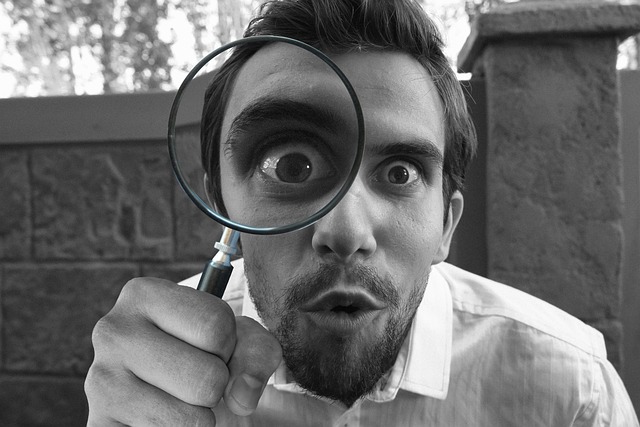Freeing Yourself from Limiting Beliefs – The Elephant Rope Story
Table of Contents
I. Introduction
Have you ever felt trapped by your own thoughts? Like there’s an invisible force holding you back from reaching your full potential?
If so, you’re not alone. We all have limiting beliefs that can hold us back, but the good news is, we can break free.
Let’s explore this through a powerful story known as “The Elephant Rope.”
II. The Elephant Rope Story
There was a man passing by an elephant camp, and he noticed that these huge creatures were only being held by a small rope tied to their front leg. No chains, no cages. It was obvious that the elephants could break away from the ropes at any time, but for some reason, they did not.
He saw a trainer nearby and asked why these magnificent beasts just stood there and made no attempt to get away. The trainer said, “When they are very young and much smaller, we use the same size rope to tie them, and at that age, it’s enough to hold them. As they grow up, they are conditioned to believe they cannot break away. They believe the rope can still hold them, so they never try to break free.”
III. Interpretation of the Story
This powerful story is a metaphor for the limiting beliefs that hold us back. Just like the elephant, we often go through life hanging onto a belief that we can’t do something, simply because we failed at it once before. We’re held back not by reality, but by our perception of reality.
The elephant in the story represents each one of us, while the rope symbolizes the limiting beliefs we hold about ourselves and our capabilities. The rope is not strong enough to hold the elephant, just as our limiting beliefs are not based on truth or fact. However, the elephant doesn’t attempt to break free because it has been conditioned to believe that it cannot. Similarly, we often don’t challenge our limiting beliefs because we’ve accepted them as our truth.
The trainer in the story is akin to the external influences in our lives that shape our beliefs – it could be our parents, teachers, peers, or society at large. These influences can often instil limiting beliefs in us from a young age, just as the trainer does with the elephant.
The man passing by the camp represents the potential for change. He questions the status quo, just as we must question our limiting beliefs if we are to overcome them. His curiosity and disbelief highlight the fact that our limiting beliefs are not absolute truths, but rather perceptions that can be challenged and changed.
In essence, the story of the elephant and the rope teaches us that our limiting beliefs are often not based on reality, but rather on past experiences and external influences. By recognising this, we can begin to challenge these beliefs, break free from our ropes, and realise our full potential.
IV. Identifying Limiting Beliefs
Limiting beliefs are often formed in our early years – it could be a result of our upbringing, past failures, or negative experiences. They can be beliefs about ourselves, our capabilities, or the world around us.
To identify your limiting beliefs, start by reflecting on areas of your life where you feel stuck. Ask yourself, “What must I believe in order to feel this way?” The answers might surprise you. For more insights, you can read this article.
V. The Impact of Limiting Beliefs
Limiting beliefs can significantly hinder our personal growth and success. They can keep us from taking opportunities, pursuing our dreams, or even recognising our own worth.
For instance, I once had a client who believed she wasn’t good at public speaking. This belief held her back from accepting leadership roles or speaking up in meetings. It wasn’t until she confronted this belief that she was able to move forward.
VI. Strategies for Freeing Yourself from Limiting Beliefs
Cognitive Restructuring
Cognitive restructuring is a core part of cognitive-behavioural therapy (CBT). It involves identifying and challenging our limiting beliefs. When a negative thought enters your mind, take a moment to challenge its validity. Ask yourself, “Is this really true?”
For instance, if you believe that you’re not good at learning new skills, ask yourself what evidence you have to support this belief. Are there instances where you’ve successfully learned something new? By examining the evidence, you can often find that your limiting belief is not as solid as you thought.
Affirmations
Affirmations are positive statements that can help you to challenge and overcome self-sabotaging and negative thoughts. When you repeat them often, and believe in them, you can start to make positive changes.
For example, if you believe you’re not good at public speaking, your affirmation could be, “I am a confident and effective speaker.” Repeat this affirmation to yourself regularly, especially when you start to feel self-doubt creeping in. Over time, this can help to overwrite your limiting belief with a more empowering one.
Visualisation
Visualisation is a powerful tool that can help you to challenge your limiting beliefs and replace them with more positive ones. Imagine yourself free from your limiting beliefs. How would you feel? What would you do differently?
For example, if you have a limiting belief about public speaking, visualise yourself delivering a speech confidently and effectively. Imagine the audience responding positively, and the sense of accomplishment you feel afterwards. Visualisation can help make your goals more tangible and attainable, and can be a powerful motivator for change.
Seeking Professional Help
Therapy and coaching can be incredibly helpful in overcoming limiting beliefs. A professional can provide you with the tools and strategies to effectively challenge and change your beliefs.
For example, a therapist or coach can help you to identify your limiting beliefs, understand where they come from, and develop strategies to challenge and change them. They can provide a supportive and non-judgmental space for you to explore your beliefs and their impact on your life.
Remember, it’s okay to seek help. Overcoming limiting beliefs can be challenging, and it’s not something you have to do alone. Whether you choose to work with a therapist, a coach, or another type of professional, remember that they are there to support you on your journey to freeing yourself from limiting beliefs.
You can learn more about this in this article.
VII. The Power of Positive Beliefs
Replacing limiting beliefs with positive ones can have a profound impact on your life. It can boost your confidence, improve your performance, and open up new possibilities. This is because our beliefs shape our perception of the world, and our perception in turn shapes our experiences.
When you hold positive beliefs about yourself and your capabilities, you’re more likely to take on challenges, seize opportunities, and persist in the face of obstacles. You’re more likely to see the potential for success, rather than the risk of failure. This can lead to improved performance in all areas of life, from your career to your relationships to your personal growth.
Positive beliefs can also have a significant impact on your mental and emotional well-being. They can help to reduce stress and anxiety, increase your resilience, and promote a more positive outlook on life. They can help you to feel more confident and empowered, and to have a stronger sense of self-worth.
You can learn more about this in this article.
VIII. Conclusion
Freeing yourself from limiting beliefs is not an overnight process, but with patience and persistence, it is entirely possible. Remember the story of the elephant. Don’t let an old belief hold you back from your full potential.
I encourage you to start identifying and challenging your limiting beliefs today. You are capable of so much more than you think. Don’t let an invisible rope hold you back. Break free and see how far you can go.
Remember, the only thing standing between you and your goals is the story you keep telling yourself. So, what’s your story going to be?




